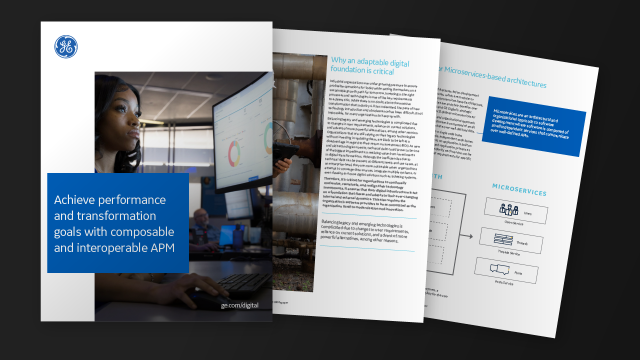
The massive transformation that Industry 4.0 has unleashed has been difficult for many energy organizations to handle. At the same time, they’re managing the pressure of the transition to cleaner energy sources and decarbonizing their operations. To handle the challenges of operating today while transforming for the future, energy companies and other asset-intensive organizations must invest in the right processes and technologies.
Relying on legacy technologies without investing in updating them can lead to diminishing returns. It’s critical for organizations to continually modernize, reevaluate, and realign their technology investments to ensure their digital infrastructure can adapt to ever-changing internal and external dynamics. This requires software providers to be as committed to modernization and innovation as the users themselves.
Making the shift to a modern, microservices architecture for asset software
Modernizing energy operations begins with a digital foundation for Asset Performance Management (APM) that can scale and adapt with the growth and needs of the enterprise. Unlike monolithic architectures, which are “built as one” and must be deployed as a single unit, modular or composable APM software is microservices based. In microservices architecture, an application is built as independent components that run each application process as a service. As the services run independently, each service can be updated, deployed, and scaled to meet requirements for specific functions of an application.
The advantages of composable software are:
- Each service can be independently scaled to meet demand for the application feature it supports.
- Small, independent teams can take ownership of their respective services and work independently or collaborate faster.
- Independent units help in fast, easy, and more frequent updates and deployments. Plus it’s easier to isolate, fix issues, experiment, and test.
- Microservices teams are free to choose the best-suited technologies for their respective services.
Asset Performance Management software that is adaptable and interoperable
GE Vernova’s modern, microservices-based APM architecture favors modularity, scalability, and agility. It offers organizations the flexibility to deploy APM applications separately or all together as a holistic enterprise-grade solution. This gives organizations of any size the flexibility to get started with select applications of a top-rated APM solution and expand to include more applications as needed in future. A single interface enhances the user experience and helps them leverage the power of centralized insights from different data types and sources including CMMS, EAM/ERP, sensor, timeseries and others.
The composable APM architecture enables different APM functionalities to split into self-contained services focused on a specific capability, such as data collection and integration, analytics, visualization, reporting, and security.
Security, agility, and speed in the cloud
Through a partnership with industry leading cloud computing platform Amazon Web Services (AWS), GE Vernova APM users gain access to microservices such as Redis, EC2, SageMaker, S3, and more.
Support the seamless flow of data across the enterprise, drive interoperability, and maximize value on your data and asset investments.
Learn more about how GE Vernova’s interoperable and composable APM software platform can optimize your asset performance.

